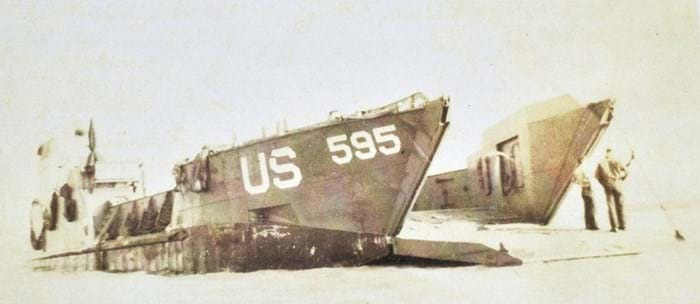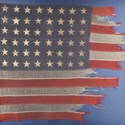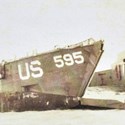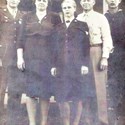That’s judging by the number of them coming onto the market in the past couple of years. Authentic flags actually flown on June 6, 1944, were thought to be rare, but a series of strong auction results seem to have prompted vendors to dig them out for consignment.
The sad fact is that nearly all the original recipients of these flags – those who actually took part in D-Day – are now dead. Even an 18-year-old in 1944 would now be into their nineties. The items usually pass to family and high prices will often tempt them to sell.
In June last year the first American flag to arrive at Utah Beach during D-Day was bought by Dutch art collector Bert Kreuk. His phone bid secured the relic for a premium-inclusive $514,000 (then about £360,000), at Heritage Auctions (19.5% buyer’s premium) of Dallas.
The flag had flown above Landing Craft Control 60, which guided the invasion into Utah Beach on June 6, 1944, and was retained by its skipper, Lieutenant Howard Vander Beek, for more than six decades before his death in 2014. The flag was consigned by his estate.
Utah survivor
The latest Utah Beach D-Day landing craft flag to surface at auction features in Milestone Auctions’ January 28 sale. It is a 48-star American battle flag from LCT 595, one of the first US Navy vessels to land on Utah Beach.
It was recovered by Boatswain George Edward Rudisill after the landings. “The commanding officer ordered Rudisill to remove the tattered flag from the landing craft and replace it with a new one,” said Miles King, co-owner of the Cleveland, Ohio, saleroom.
“At that point, Rudisill asked if he could keep the flag and was granted permission. He kept it, together with the only known photograph of LCT 595, in a shoebox until his passing in 2013. Since then, the flag and related mementos have remained in the Rudisill family.”
The flag is offered with an archive of provenance that includes Rudisill’s service records documenting his part in D-Day, his US Navy muster rolls registration card, photos of Rudisill in uniform, and a rare photo of LCT 595 on Utah Beach. It is also accompanied by a sworn affidavit from Rudisill’s son, Thomas, in which he reiterates his father’s account of the D-Day Invasion.
The flag retains a few machine gun bullet holes and has tattered edges from being blown about as the craft encountered turbulent waters. The estimate is $40,000-80,000.
British D-Day flag
Flying the flag for the D-Day Brits meanwhile was a lot sold in Charles Miller’s November 8 sale for £11,000 against an estimate of £2000-3000.
The white ensign was believed to be the first Allied flag raised on Sword Beach on D-Day. Damge included two probable bullet holes and smoke staining.
A brass plaque accompanying it stated: “This Ensign was Hoisted at 0800 (H+30) on ‘D’ Day, June 6th 1944, Sword Area, Queen Red Beach, Lion-Sur-Mer, at the Outset of the Campaign in Normandy.”
The ensign was recovered from the beachhead and taken to HMS Mercury (a Portsmouth shore establishment) and deposited with the Royal Navy Trophy Store
It was eventually sold to a collector in the 1970s and then consigned to Charles Miller, who holds his sales at the auction ‘hub’ of 25 Blythe Road in West Kensington.











